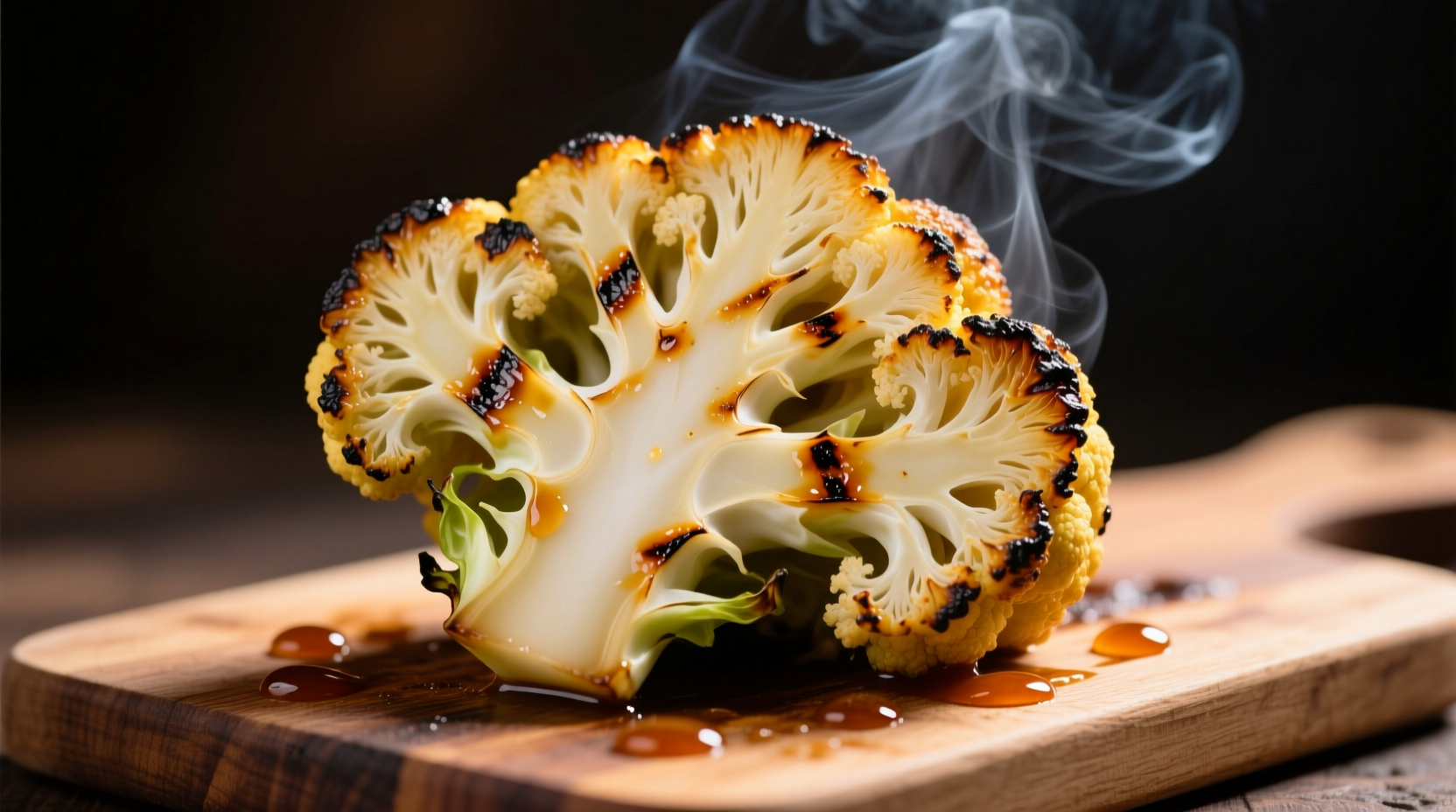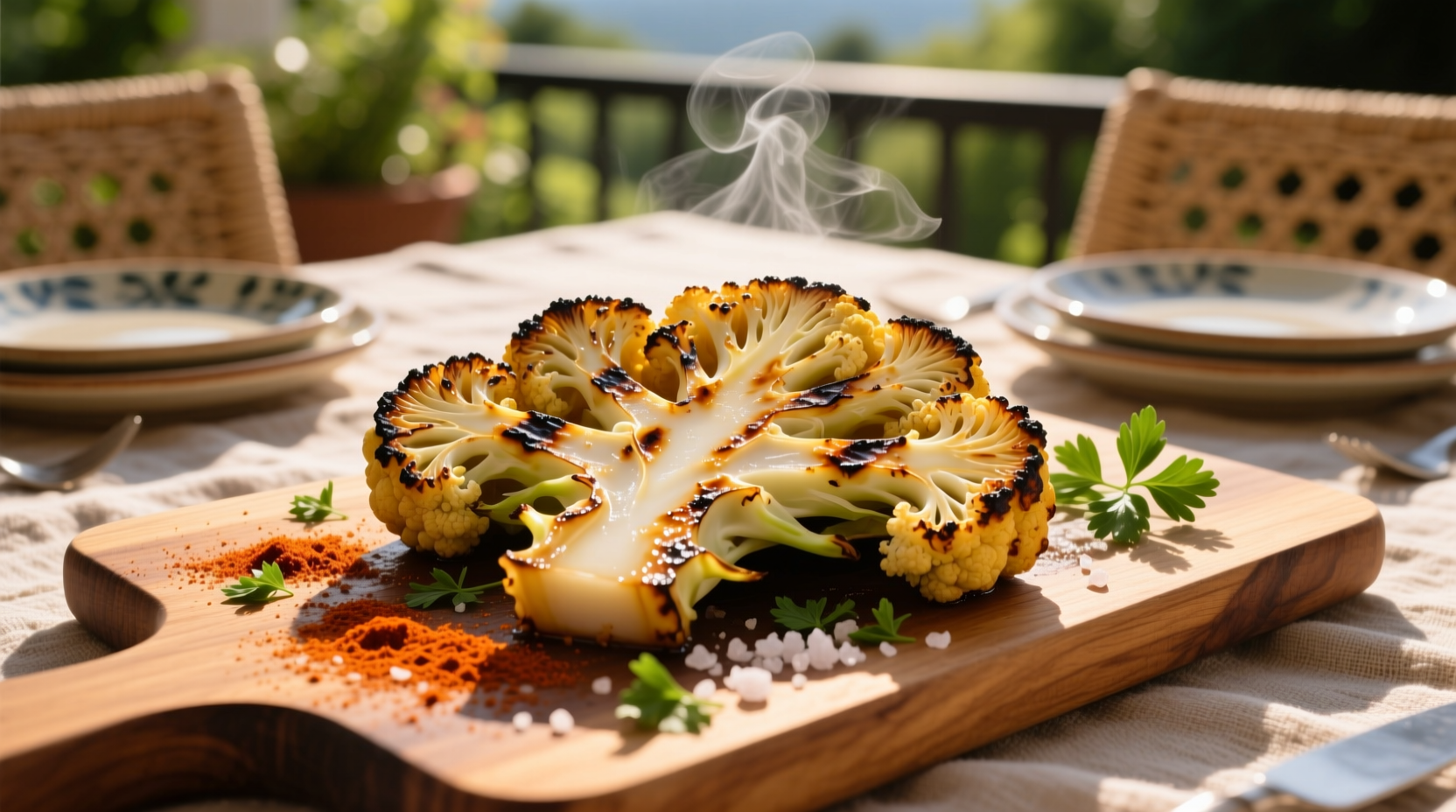Barbecue cauliflower has surged in popularity as a versatile plant-based alternative that captures the essence of traditional barbecue without compromising on flavor or texture. When prepared correctly, this cruciferous vegetable develops a remarkable meaty quality through the Maillard reaction, creating a satisfying centerpiece for any cookout. The secret lies in understanding cauliflower's unique cellular structure and how heat transforms its natural sugars.
Why Cauliflower Excels on the Grill
Cauliflower's dense structure makes it uniquely suited for barbecue applications. Unlike softer vegetables that fall apart on the grill, cauliflower maintains its integrity while developing complex flavor compounds through caramelization. According to research from the Culinary Institute of America, the vegetable's high glutamic acid content (similar to mushrooms and tomatoes) creates natural umami notes when exposed to high heat—explaining why properly grilled cauliflower satisfies cravings typically associated with meat-based barbecue.
| Cooking Method | Texture Result | Flavor Development | Best For |
|---|---|---|---|
| Direct High Heat | Crispy exterior, tender interior | Intense char, smoky notes | Steaks, thick slices |
| Indirect Medium Heat | Evenly tender | Milder smoke infusion | Whole heads, delicate preparations |
| Oven Broiling | Controlled browning | Consistent caramelization | Indoor preparation |
Essential Preparation Techniques
Proper preparation separates adequate barbecue cauliflower from extraordinary results. Start by selecting fresh, firm heads with tight curds and minimal browning. The USDA recommends storing cauliflower at 32-35°F with 95% humidity to maintain optimal texture before cooking. For best results:
- Dry thoroughly—moisture prevents proper browning (pat dry after washing)
- Cut strategically—thick steaks (1-1.5 inches) maintain structure better than florets
- Pre-salt—apply 1/4 teaspoon kosher salt per pound 20 minutes before cooking to draw out excess moisture
- Oil properly—use high smoke point oils (avocado or grapeseed) rather than olive oil

Mastering the Barbecue Sauce Formula
The ideal barbecue sauce for cauliflower balances acidity, sweetness, and smoke without overwhelming the vegetable's delicate flavor. Professional chefs follow this foundational ratio:
3 parts tomato base : 1 part sweetener : 1 part acid : 1/2 part smoke
Customize your barbecue cauliflower sauce with these professional variations:
- Classic Southern—use molasses for depth, apple cider vinegar for brightness, and smoked paprika for authentic barbecue notes
- Carolina Style—substitute mustard for half the tomato base with vinegar punch (perfect for cutting through cauliflower's richness)
- Asian Fusion—replace sweetener with honey, add ginger and fish sauce for umami complexity
Apply sauce during the final 5-7 minutes of cooking to prevent burning. For maximum flavor penetration, marinate cauliflower in 1/3 of your sauce mixture for 30-60 minutes before grilling—any longer risks texture breakdown from the acid.
Perfect Cooking Temperatures and Timing
Temperature control makes or breaks barbecue cauliflower. The USDA Food Safety and Inspection Service recommends cooking vegetables to an internal temperature of 165°F for food safety, but cauliflower achieves optimal texture at 175-185°F. Use this precise timing guide:
- Grill temperature: 400-450°F (medium-high)
- Prep time: 15 minutes (including salting and oiling)
- Direct heat time: 8-10 minutes per side for steaks
- Total cooking time: 20-25 minutes
- Resting time: 5 minutes (critical for moisture redistribution)
Flip cauliflower only once during cooking to develop proper grill marks and prevent breakage. For extra smokiness, add wood chips (hickory or applewood) to your charcoal or gas grill. Indoor cooks can achieve similar results using a cast-iron grill pan on the stovetop followed by a 5-minute broiler finish.
Achieving Restaurant-Quality Results at Home
Professional kitchens employ several techniques home cooks can easily replicate:
- Double-cook method: Blanch cauliflower briefly (3-4 minutes) before grilling for more even cooking
- Oil spray technique: Mist with oil rather than brushing for even coverage without excess
- Finishing salts: Sprinkle with flaky sea salt and smoked paprika immediately after cooking
- Acid adjustment: A final splash of apple cider vinegar brightens flavors just before serving
Serving and Pairing Suggestions
Barbecue cauliflower shines as both centerpiece and supporting player. For complete meal planning:
- As main course: Serve with grilled lemon wedges and herb yogurt sauce
- With grains: Pair with cilantro-lime rice or quinoa salad for complete protein
- With traditional sides: Complement with classic coleslaw and baked beans
- For meal prep: Chop into bite-sized pieces for grain bowls throughout the week
Nutritionally, one cup of grilled barbecue cauliflower provides 25 calories, 2g fiber, and 77% of your daily vitamin C needs according to USDA FoodData Central. Its low calorie density makes it an excellent choice for health-conscious barbecue lovers seeking satisfying alternatives.
Common Mistakes to Avoid
Even experienced cooks make these barbecue cauliflower errors:
- Over-marinating: Acidic components break down texture beyond 60 minutes
- Insufficient pre-salting: Skipping this step leaves excess moisture that steams instead of grills
- Too frequent flipping: Prevents proper char development and causes breakage
- Applying sauce too early: Sugar content burns before cauliflower cooks through
Storage and Reheating Guidelines
Proper storage maintains barbecue cauliflower's texture for future enjoyment. The National Center for Home Food Preservation recommends:
- Refrigeration: Store in airtight container for up to 4 days
- Freezing: Blanch before freezing for up to 3 months (texture changes slightly)
- Best reheating: Crisp in 400°F oven for 8-10 minutes (avoid microwave)











 浙公网安备
33010002000092号
浙公网安备
33010002000092号 浙B2-20120091-4
浙B2-20120091-4